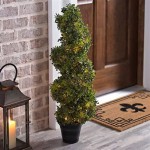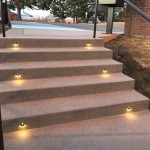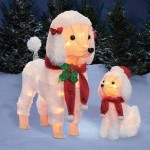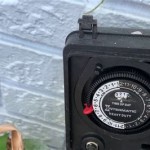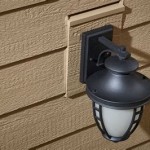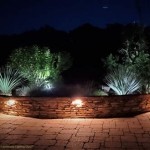What Color Should Outdoor Light Fixtures Be?
Choosing the right color for outdoor light fixtures involves considering both aesthetic and practical factors. The color of the light emitted, measured in Kelvin (K), significantly impacts visibility, ambiance, and even the surrounding ecosystem. Fixture finishes also play a role in the overall aesthetic, complementing the architectural style of the home and landscape.
Understanding Color Temperature
Color temperature describes the warmth or coolness of light. Lower Kelvin values indicate warmer, more yellow-toned light, while higher Kelvin values signify cooler, bluer light. Selecting the appropriate color temperature is crucial for creating the desired atmosphere and functionality.
Common Color Temperatures for Outdoor Lighting
Several color temperatures are commonly used for outdoor lighting, each offering unique benefits:
- Warm White (2700K-3000K): This range provides a warm, inviting glow, ideal for creating a relaxing and welcoming ambiance in areas like patios, decks, and entryways.
- Soft White (3000K-3500K): Offering a balance between warmth and clarity, soft white is a versatile option suitable for general outdoor lighting, pathways, and landscaping.
- Neutral White (3500K-4100K): This temperature provides a cleaner, brighter light, ideal for highlighting architectural features, security lighting, and task-oriented areas.
- Cool White (4100K-5000K): Cool white emits a crisp, bright light, suitable for security purposes, large outdoor spaces, and areas requiring high visibility.
- Daylight (5000K-6500K): Mimicking natural daylight, this option is best suited for security cameras, floodlights, and areas where accurate color rendering is essential.
Impact of Color Temperature on the Environment
Color temperature can significantly affect the surrounding environment. Blue-rich white light (higher Kelvin) can disrupt the natural sleep cycles of wildlife and contribute to light pollution. Choosing warmer color temperatures, particularly in areas near natural habitats, can minimize these negative impacts.
Choosing the Right Color for Different Applications
The ideal color temperature varies depending on the specific application:
- Security Lighting: Cooler temperatures (4000K-5000K) are often preferred for security lighting as they provide better visibility and can deter intruders.
- Landscape Lighting: Warmer temperatures (2700K-3000K) create a more inviting and aesthetically pleasing atmosphere for landscaping.
- Pathway Lighting: Soft white (3000K-3500K) offers a good balance of visibility and ambiance for pathways.
- Accent Lighting: Color temperature for accent lighting depends on the desired effect. Warmer temperatures can highlight warm-toned building materials, while cooler temperatures can enhance cooler tones.
Considering Fixture Finishes
The finish of the light fixture itself contributes to the overall aesthetic. Common finishes include:
- Black: A classic and versatile option that complements a wide range of architectural styles.
- Bronze: Adds a touch of elegance and warmth, particularly suitable for traditional and rustic homes.
- Nickel: Offers a sleek and modern look, often chosen for contemporary homes.
- Brass: Provides a timeless and sophisticated appeal, suitable for both traditional and contemporary settings.
Dark Sky Compliance and Light Pollution
Minimizing light pollution is a growing concern. Choosing appropriate fixtures and color temperatures can help reduce the impact of artificial light on the night sky. Look for fixtures that are Dark Sky compliant, meaning they minimize upward light emission and use warmer color temperatures.
Energy Efficiency and Color Temperature
While LED lighting is generally energy-efficient, some color temperatures may consume slightly more energy than others. However, the difference is typically minimal and should not be the primary factor in color selection. Focusing on fixture design and lumen output will have a greater impact on overall energy consumption.
Matching Color Temperature to Home Style
The color temperature of outdoor lighting should complement the architectural style of the home. Warmer tones often suit traditional and rustic homes, while cooler tones can enhance the modern aesthetic of contemporary homes. Consider the existing color palette of the home’s exterior when selecting fixture finishes and color temperatures to create a cohesive look.
Utilizing a Layered Lighting Approach
A layered lighting approach can enhance the functionality and aesthetics of outdoor spaces. By combining different fixture types and color temperatures, it's possible to create a dynamic and well-lit environment. For example, warmer temperatures can be used for ambient lighting, while cooler temperatures can be employed for security and task lighting.

Choose The Best Color Temperature For Your Outdoor Lighting Knowledge Base Super Bright Leds

Best Color Temperature For Outdoor Lighting Enhanced

How To Choose The Right Outdoor Light Fixtures

Color Temperature Your Guide To Outdoor Lighting

What Is Color Temperature Creative Outdoor Lighting

Choose The Best Color Temperature For Your Outdoor Lighting Knowledge Base Super Bright Leds

Best Color Temperature For Outdoor Lighting Enhanced

Outdoor Lighting Color Temperatures

Color Temperature Your Guide To Outdoor Lighting

Best Color Temperature For Outdoor Lighting Enhanced
Related Posts
